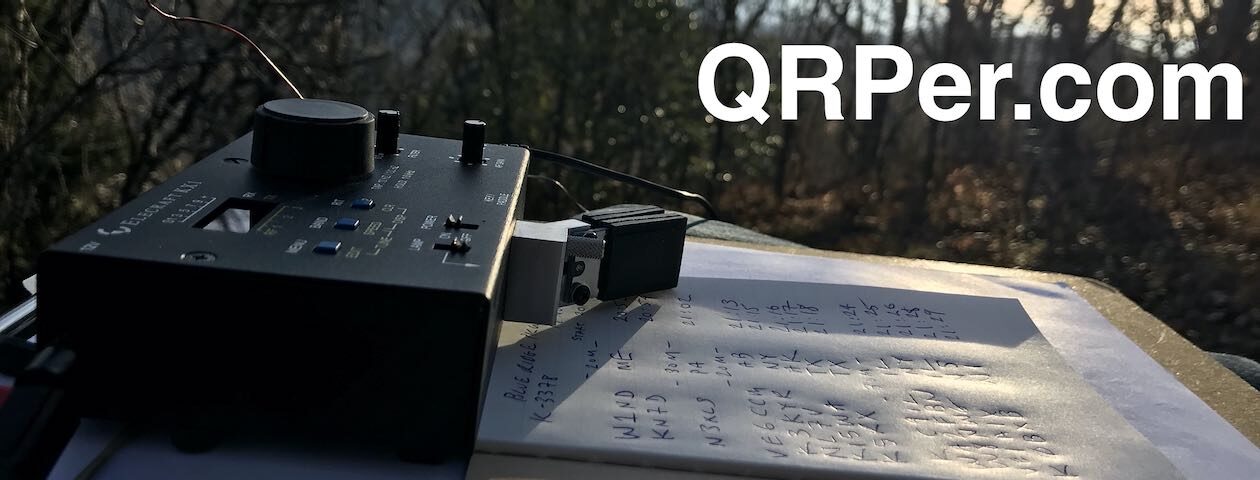Folks,
We are only 2 days away from the start of Pacificon in San Ramon, CA and the start of our QRPacificon activities.
Brief Schedule:
Friday: No host dinner at 6PM followed by homebrew show and tell with prizes
Saturday: Speakers 9AM=11AM and 2PM-4PM, Indoor Flea Market and Vendor night 7PM-?
It all starts at 6PM Friday evening with a no host dinner organized by Jim Duffey.
The restaurant is the same as last year:
EL Balazo
250 Market Place
San Ramon
(925) 328-0510
Click here for map
We will meet in the lobby at 5:30 and head over to the restaurant.
After dinner, we are sponsoring a builder show and tell with prizes. Bring your homebrew creations to show off and be judged. We will have categories for tube gear, test gear, radios, etc. Prizes will be given for the best in class.
Saturday morning starts with coffee at 9AM and we have a great speaker lineup:
9AM
Douglas Quagliana, KA2UPW
Introduction to Amateur Radio Satellites
Douglas holds an Extra Class Amateur Radio license
and has been chasing amateur radio satellites since 1996.
His writings have appeared online
and in amateur publications including QRPp, QRP Quarterly,
and the Proceedings of the AMSAT-NA Space Symposiums. His
other amateur radio interests include digital signal
processing, APRS, QRP, and mobile HF. His current amateur
radio work includes a 38k4 baud DSP soundcard modem and a
matching telemetry program for the amateur radio satellite
AO-51 (Echo). Douglas holds a Bachelors Degree in Computer
Science from St. Bonaventure University and a Masters
Degree in Computer Science from Stevens Institute of
Technology in Hoboken, New Jersey. He has one patent.
10AM Dave Farden, AA0ZU
Homebrew mobile antennas amd operation.
Dave Farden, AA0ZU, was first licensed in 1963 (WA0HAU)
at the age of 14. He has been operating HF mobile, on and
off, since 1965 with a wide variety of vehicles, rigs, and antennas.
The hobby became a career: he is currently a Professor of Electrical
Engineering at North Dakota State University, with professional
interests in communications and signal processing.
Dave joins us from North Dakota and will be talking about his homebrew mobile
antennas and experiences operating mobile in North Dakota. If you have worked
a mobile station in North Dakota, especially on the low bands, it is very possible
it was Dave.
2PM: Jim Duffey KK6MC
Jim needs no introduction. He has been a previous speaker at Pacificon and always
delivers a great presentation.
3PM: Dan Tayloe:
Dan Tayloe has been in ham radio for over 35 years. From day one, Dan
has always been a builder. Dan likes to build more than he likes to
operate. For the last few years, he has been heavily involved in
designing very high performance, very low power direct conversion
receivers. In his spare time he works for Motorola as a cellular>telephony
systems engineer. Dan is married to a very understanding XYL, Vicki, who can
usually be found negotiating for him at hamfests.
My presentation is called “Receiver Audio Filter Design – Approaches for
Improved Receiver Audio Performance” I will be mainly taking about R/C
active filter design, but will also touch on other topics like filter Q
and ringing, the need for hearing protection, effects of op-amp
distortion on high performance filters, and impacts of dual overlapping
filters.
After the speakers wrap up at 4, we will break for dinner.
We will regroup at the hotel at 7PM. This year, we will not have the Auction but will provide table space
for you to sell any QRP related equipment you would like at our indoor flea market. We will also
have a number of QRP equipment vendors present.
On behalf of the entire Norcal QRP Club staff, we hope to see you there All QRP activities are provided courtesy of the Norcal QRP club and are free of charge.
You only need to pay your admission to the Pacificon event to attend.
Pacificon tickets and information are on their website www.pacificon.org
72/73
James
KA5DVS
 According to a new article published by NASA, we may have finally hit the rock bottom of the Solar Cycle and are on our way to Solar Cylce 24. According to sunspot forecaster David Hathaway of the NASA Marshall Space Flight Center, the recent sun spots groups that have appeared on the sun belong to Solar Cycle 24. This is an encouraging development since we have been dealing with the solar minimum for what feels like an eternity in QRP time (nearly 2 years, according to NASA).
According to a new article published by NASA, we may have finally hit the rock bottom of the Solar Cycle and are on our way to Solar Cylce 24. According to sunspot forecaster David Hathaway of the NASA Marshall Space Flight Center, the recent sun spots groups that have appeared on the sun belong to Solar Cycle 24. This is an encouraging development since we have been dealing with the solar minimum for what feels like an eternity in QRP time (nearly 2 years, according to NASA). 
 I have subscribed to the basic black and white newsprint magazine, “WorldRadio” several times since I first got my ticket. I’ve actually known several hams who have published in this magazine–can’t say that for the glossy magazines.
I have subscribed to the basic black and white newsprint magazine, “WorldRadio” several times since I first got my ticket. I’ve actually known several hams who have published in this magazine–can’t say that for the glossy magazines.




